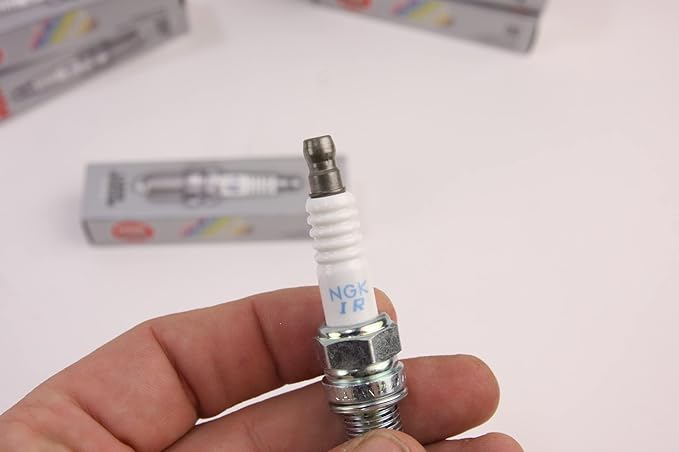How Big is the Spark Plug Gap?
NGK Spark Plug ILZKR7B11 7751 (6 Pack), Check The Price >>>
The gap between the electrodes of a spark plug significantly affects its performance. If the gap is too small, the spark will be weak, leading to carbon deposits and leakage. Conversely, if the gap is too large, the required breakdown voltage increases, making it difficult for the engine to start and increasing the likelihood of misfires at high speeds. Therefore, it’s crucial to maintain an appropriate spark plug gap. Generally, for battery ignition systems, the ideal spark plug gap is between 0.7 and 0.8 mm, though it can exceed 1.0 mm in some cases.
Spark Plug Gap Standards
- Definition: The spark plug gap refers to the distance between the center electrode and the ground electrode.
- Small Spark Plug Gap: A gap that is too small can easily generate carbon deposits, leading to leakage.
- Large Spark Plug Gap: If the gap is too large, the breakdown voltage increases, making it challenging to start the engine. During high-speed driving, misfires can occur, and the arc length may become excessive, facilitating ignition of the air-fuel mixture in the cylinder. This requires a significant amount of voltage, which is unsuitable for any vehicle model.
- Standard Spark Plug Gap Selection: The appropriate gap varies by vehicle model. Generally, the commonly used gap is 0.7-0.8 mm, while some spark plugs can exceed 1 mm. Larger gaps are typically found in SUVs, MPVs, and pickups, whereas smaller gaps are standard for compact and micro cars.
Dangers of Inappropriate Spark Plug Gaps
Too Large a Gap:
- Increases arc length but reduces energy, which can lead to cylinder misfires.
- Requires a higher pulse ignition voltage for effective ignition.
- May cause the engine to stall during operation.
- Can result in insufficient fuel combustion, leading to increased fuel consumption.
If you discover that your spark plug gap is excessive, it’s essential to replace the spark plug promptly. A well-functioning spark plug enhances engine power and improves fuel efficiency.
Too Small a Gap:
- Can make starting the engine difficult or even impossible, and may lead to premature ignition and deflagration (vibration).
- Often results in increased noise and heavy exhaust emissions.
- Causes incomplete combustion of the air-fuel mixture, further increasing fuel consumption.
How to Adjust the Spark Plug Electrode Gap
The appropriate spark plug gap varies by vehicle model and can usually be found in the vehicle manual. The gap can generally be adjusted between 0.6 and 1.2 mm. If the gap is incorrect, you can use needle-nose pliers to clamp the base of the side electrode and gently bend the tip to adjust the gap. Avoid hitting the side electrode directly, as this can cause damage and may result in debris falling into the cylinder, potentially scratching the cylinder wall. If the spark plug becomes misaligned or the electrode is worn down to a rounded shape, it must be replaced.
How to Choose Spark Plugs
When selecting spark plugs for your vehicle, it’s crucial to choose the model specified by the manufacturer; not all spark plugs are compatible. Several factors should be considered, including the engine model, cooling method, number of strokes, fuel type, ambient temperature, and common working conditions. The spark plug model is determined when the vehicle is manufactured. If the installation size matches, users can choose the spark plug’s heat range based on ambient temperature, road conditions, and whether the engine is old or new.
For instance, the typical heat range for domestic spark plugs under standard conditions is 5. If the temperature drops below 5 °C, a spark plug with a lower heat range should be selected to maintain the working temperature of the spark plug skirt. For older engines, it’s advisable to use spark plugs with a lower heat range to mitigate the risk of contamination due to wear and tear on engine components.

